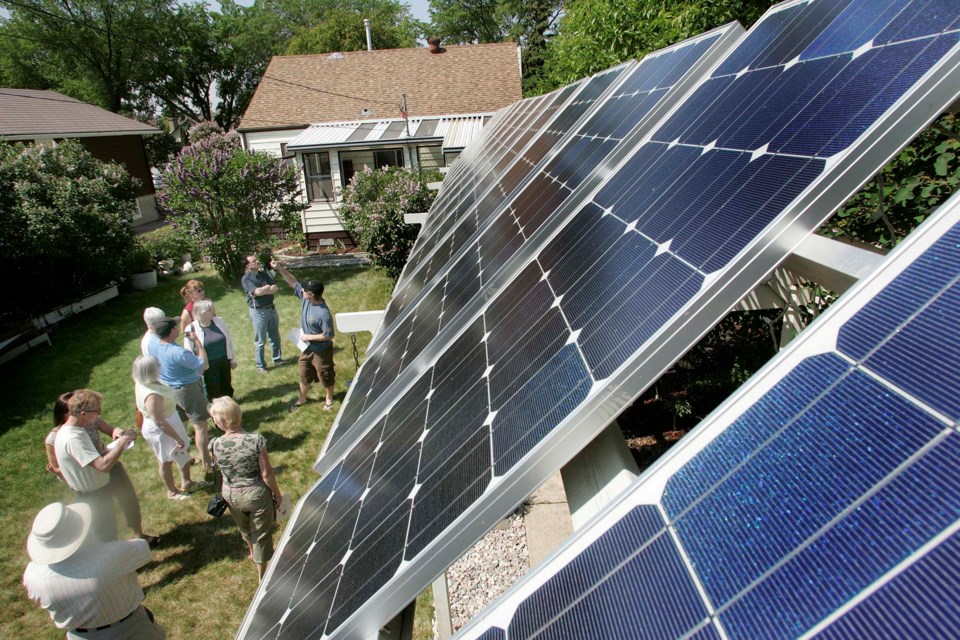Sturgeon County residents could soon pay for solar panels and new insulation on their homes through their taxes if county council approves a new property assessed clean energy program.
Sturgeon County council passed first reading of the Clean Energy Improvement Program (CEIP) tax bylaw March 8.
Some 13 per cent of Canada’s greenhouse-gas emissions come from buildings, the federal government reports. Green construction advocates say virtually every building in Canada will have to be built or retrofitted to produce net-zero emissions in the coming decades if Canada is to prevent the floods, fires, and droughts caused by global warming.
But while net-zero retrofits reduce emissions and save people money, they often have steep up-front costs that deter many people from buying them.
CEIP is one possible solution. Popular in the U.S., where it is known as Property Assessed Clean Energy (PACE), CEIP lets people pay for energy efficiency projects through their property taxes over many, many years — so many that those payments are covered in whole or in part by the project’s energy savings. Those payments are also attached to the property, not the owner, so a person only pays for a project so long as they own and benefit from it.
Sturgeon County’s CEIP bylaw, if passed, would allow residents and business owners to get loans to buy renewable energy and energy efficiency projects for their buildings, which they could pay for over up to 25 years through property taxes, much as they might pay for a new road through a local improvement tax.
Under the law, applicants could apply for one loan of at least $3,000 per property per year provided they are not bankrupt and are not in arrears on their taxes and the property is up to safety codes. Applicants could get up to $50,000 for residential, $300,000 for farmland, and $1 million for non-residential projects. Designated industrial properties (such as oil pipelines and refineries) would not be eligible for the program.
County municipal energy specialist Brandon Sandmaier told council that this program would cover a long list of potential upgrades, including windows, insulation, heating, and solar power. It should also create local jobs and lower energy costs and greenhouse-gas emissions.
The draft law proposed that the County borrow roughly $6.8 million to fund a four-year program — $2.3 million for residential upgrades (which would roll out first) and $4.5 million for non-residential. Sandmaier said the County could source this money from the Federation of Canadian Municipalities (FCM) and local banks, adding that this money would not count toward the county’s debt limit. The program itself would be run by the Alberta Municipal Services Corporation; the County hopes to get a grant from the FCM which would cover the program’s administrative costs for four years.
Council heard that about 10 Alberta communities had implemented CEIP laws. Devon and Rocky Mountain House now have programs in effect. St. Albert and Edmonton are expected to start CEIP later this year.
Coun. Neal Comeau strongly supported the bylaw, saying he had fielded many questions from residents in the last year about when CEIP would start.
The bylaw goes before a public hearing this April. If approved, Sandmaier said the program could start in 2023.




